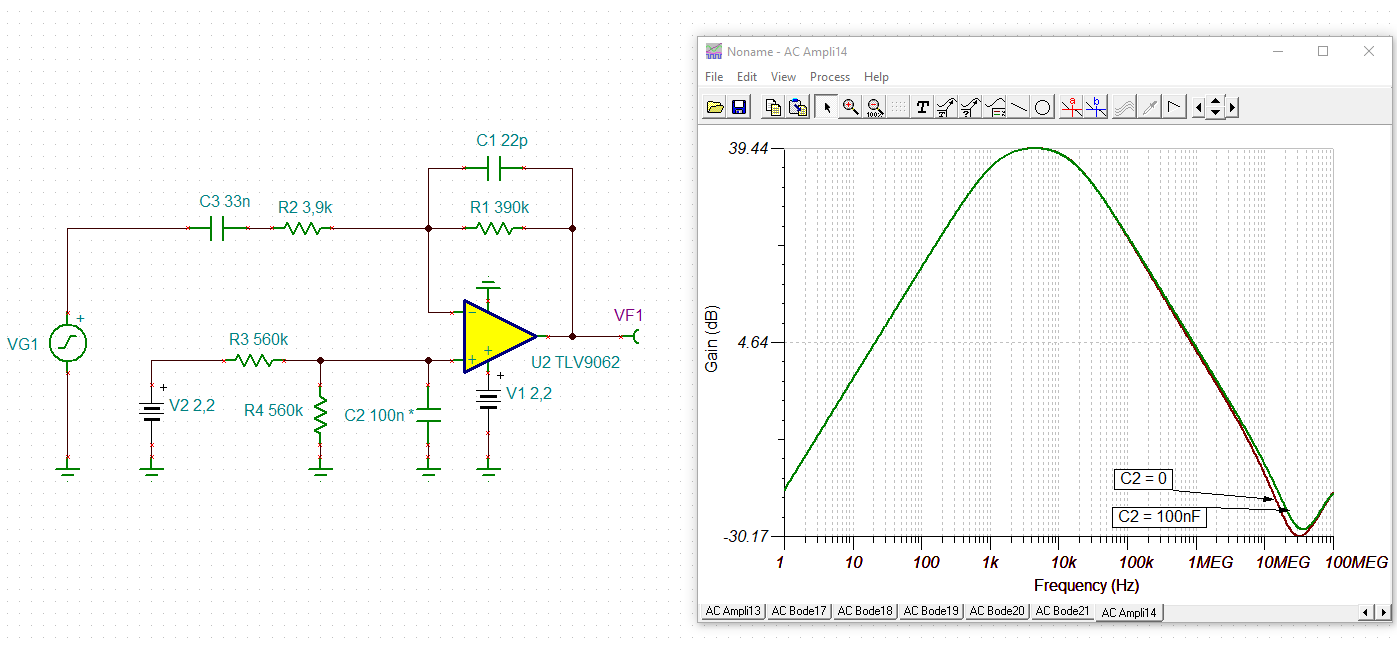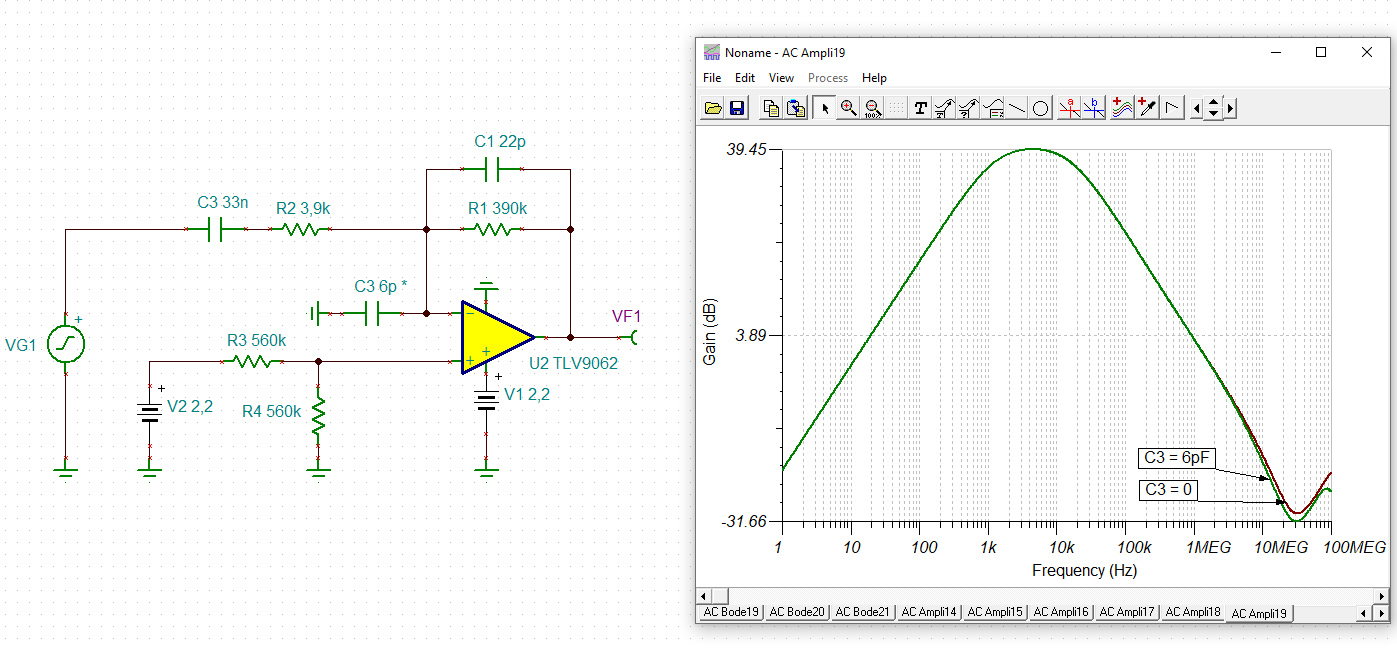Other Parts Discussed in Thread: DUAL-DIYAMP-EVM, , TINA-TI
Hello guys,
One of my customers is evaluating TLV9062 using Inverter Amplifier type (Figure 11. Inverting Amplifier Schematic) of TI OPAMP evaluation board, DUAL-DIYAMP-EVM.
https://www.ti.com/jp/lit/ug/sbou193/sbou193.pdf
Could you please give me your reply for them?
They use the following parameters for the evaluation.
R1/6=Open, C4/7=33nF, R3/8=3.9kohm, C3/6=22pF, R2/7= 390kohm, R4/9=560kohm, R5/10=560kohm, C5/8=100nF, C1/2=100nF
Also each terminal voltages are below.
V+=2.2V, V-=GND=0V.
And REFA/B=2.2V supplied from a power supply separated from V+ power supply,
They took a gain-frequency characteristics in these conditions. As the result, the characteristics was almost same as TINA-TI simulation result when 100nF are mounted on C5/8.
But when the 100nF were removed from C5/8, the gain in range over 5kHz became lower than TINA TI simulation result.
There question is the follow.
Q1. What do you think the cause?
Q2. Are C5/8 mandatory parts?
Your reply would be much appreciated.
Best regards,
Kazuya.




